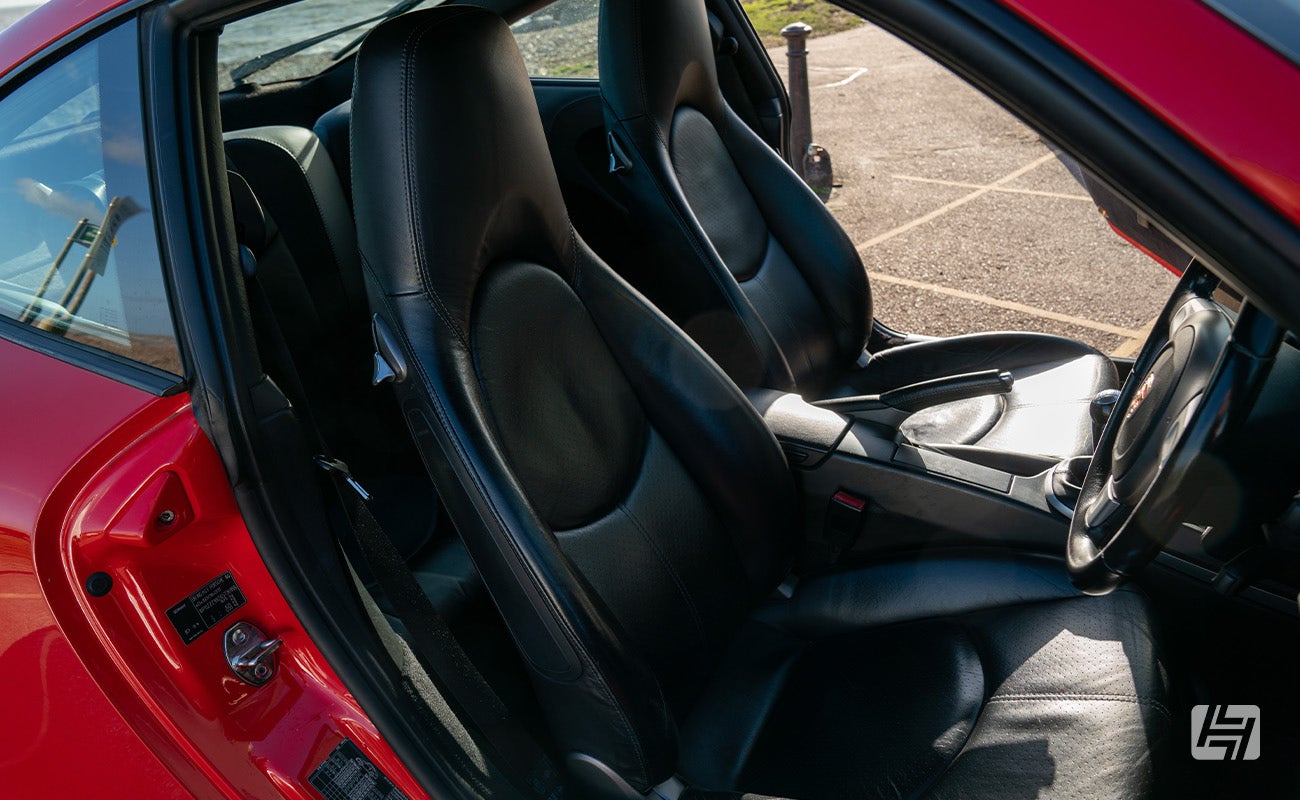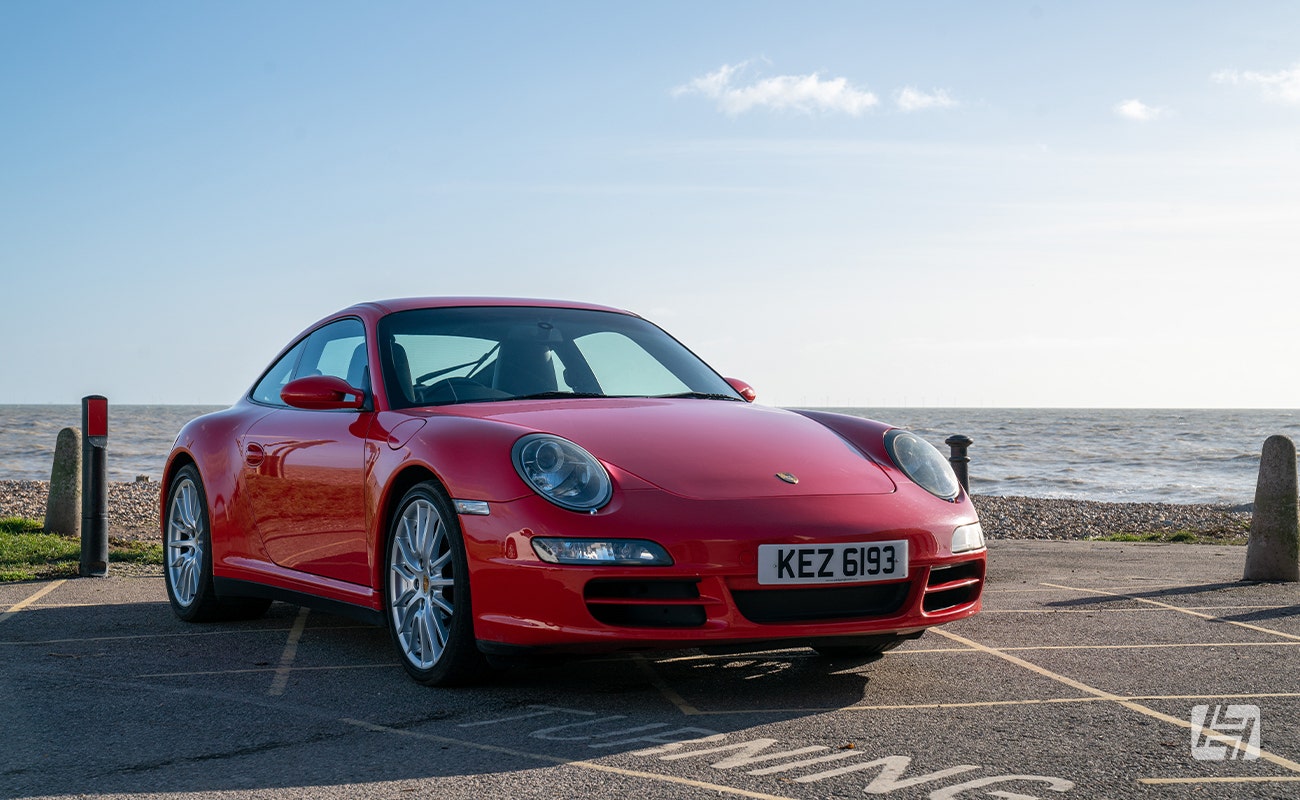Porsche 997 Buying Guide
Thinking of purchasing a noughties Porsche 911? The Porsche 997.1 and 997.2 are great cars and offer some real refinement over its older siblings. But don't go shopping just yet. Read our Porsche 997 Buying Guide first, so you'll know what to look for and more importantly, what you want before any cash changes hands.
History of the Porsche 997
The 997 variant of the Porsche 911 was introduced in late 2004 (the Model Year 2005) as a successor to the 996 model. From the side on it looks pretty similar, but noticeably it moves away from the Teardrop / Fried Egg design headlights at the front which is more in keeping with earlier incarnations. At the back, the Porsche 997 can be identified over its predecessor by the centre of the rear bumper sitting higher than the bottom of the taillights. As with the outgoing 996, the 997 was offered with narrow and wide-body specifications. The additional girth is reserved for the 4WD models, including the range-topping Turbo (except for GTS). For reference, the car in most of these photographs is a 2006 Guards Red 997.1 Carrera 4S.


Porsche 997 engine options
The Carrera model was launched with a 3.6-litre engine, producing 325 bhp. The Carrera S was fitted with the larger 3.8 hosting a healthy 355 horses inside. The ‘S’ model package offered 19” alloys over standard 18" wheels, Bi-Xenon Headlights, bigger brakes with the tell-tale red calipers and PASM- Porsche Active Suspension Management as standard. As a heads up, all ‘bigger’ engine models had the red calipers, except for those with PCCB – Porsche carbon Ceramic Brakes in which case they are yellow. Both the 3.6 and the 3.8 offer a great grin factor and unless you have driven both in anger you'll be far from disappointed should you settle for a Carrera, rather than splash out the extra on an S.


Want an even faster Porsche 997?
2 years into production and in time for the 2007 MY, the Turbo was added to the 997 line up featuring a twin-turbocharged 3.6 Mezger engine producing 480bhp. For Gen 2 models engine capacity was raised to 3.8 and power jumped up to 530bhp for the Turbo S. The Normally Aspirated 997 GT3 also joined the ranks for 2007 with a track-focused set and generous 415bhp on tap. The hardcore GT3RS kept the same power but skimmed an additional 20kg of the overall weight of the car. For those shopping for Gen 2 cars, the GT3 gained a further 20bhp and the RS now 25kg lighter boasted 450bhp. The 'widow maker' of the 911 world, the GT2 and GT2RS feature a twin-turbo engine in a wide 'Turbo' body but only uses 2WD. Gen 1 cars unleash 530bhp through the rear wheels. The Gen 2 cars were badged GT2RS and had a whopping 620bhp on tap. They can top 200 mph if your private driveway is long enough. The Turbo is by far the most practical of the four, however, a GT3 or even an RS could be used daily if needed. The GT2 and the later RS version... we'd recommend you keep one of those for sunny days.




997 Targa and 997 Cabriolet models
If you are searching for some additional ventilation and sunlight in the cabin both the 997 Targa and the 997 Cabriolet are on offer. The Targa came with a glass panoramic sunroof which slides on electric motors backwards towards the opening glass hatch... Yep, the Targa has the added practicality of a rear tailgate too! The Cabriolet has an electronically operated folding soft top. Accessory hardtops were available when sold new, but carrying an additional cost, not every owner chose to tick that box. The good news is that the 996 hardtop roof also fits and eBay is flooded with them for a few hundred quid.




Pick your spec: 2WD, 4WD, Manual, Auto and PDK
It is only when you get the Porsche 997 out on an open road that you can start to reap the benefits of your chosen drivetrain. Around town, it'll make little difference to how many wheels are being powered, presuming you stick to the speed limits and drive like an adult. Once properly on the move, 2WD feels a little more agile, a bit closer to the iconic cars of the analogue era. The 4WD arguably offers some extra safety, especially in slippery conditions but you are most likely to chose a 4WD version for its trademark wide hips than its wet weather prowess. When it comes to changing cogs a manual transmission is the default choice of many shopping for a sportscar. Should a 2 pedal car be your preference though, the Tiptronic (Gen 1 cars) will tackle slower moving traffic perfectly, with the added benefit of resting your left leg! Out on the road, it will sap some power and be a little less involving than the stick shift. If an Automatic 911 is a must-have for you then the PDK option is much improved, over the earlier Auto-box. Sadly for your wallet, these are only available on the Gen2 cars, and dealers are well aware of their popularity. On the plus side, you'll get 'flappy paddles' to change up and down on the steering wheel, just like your favourite F1 stars.


Second Generation - 997.2
For 2009 MY production the 997 was revised and whilst still retaining the 3.6 and 3.8-litre displacement, the engines themselves were changed from the faithful Mezger type to a DFI unit (Direct Fuel Injection) with the power increased to 355 BHP and 385 BHP respectively (circa 500 BHP for the Turbo). Other changes included some minor body tweaks to the bumpers, wheel designs and wing mirrors as well as introducing LED front running lights and LED rear light units. Breaking the rule we mentioned earlier. It is worth noting that the special edition GTS was a widebody car (44mm if you were to measure it) but available in both 2wd and 4wd guises. They were fitted with a 'Powerkit' giving their 3.8litre motors 400bhp, the door cards and dashboards typically came as 'plastic' rather than leather, which was a paid option. The seats are half Alcantara and they have a suede-a-like steering wheel and gear knob to match. Wheel wise the GTS was offered with the option of centre-lock alloys, as per the GT3 and Gen 2 Turbo. When buying watch out for late registered/imported Gen 1 cars – some Gen 1 cars have been seen on a ’09 registration but can be found quite easily on a ’58, this was due to the economic climate in 2008 when actual sales numbers were not that high. Like for like, Gen 2 cars will be worth a bit more money.


Inside the Porsche 997
The 997 is a genuine 2+2 Coupe and a pair of adults could travel in the back for a short journey (the pub, or a to a local event). We'd suggest, however, that the rear is reserved only for children should you be making longer trips, due to the lack of head height and legroom. For those with young kids, you'll be pleased to hear the rear seats will accept the majority of child seats too. Whilst you are unlikely to be going to IKEA in it, the rear seats do fold down to accommodate larger loads and the frunk is pretty generous in size for overnight bags etc. The front seats on all but the GT/RS cars are leather and come in a variety of specifications - the basic seat like these pictured and a Sports Seat which has additional wings by your shoulders and has a full plastic back. Embossed Porsche crests could have been chosen as an option and can appear on both types of the reclining seat. Whilst you are making yourself comfy in these classy chairs, check the bottom of the door cards for moisture. The carpet trim can also retain water and in most cases, this is due to the inner door membrane failing and allowing water to come through.








Going shopping for a Porsche 997
With the oldest examples almost 20 years old, there are great deals to be had, but this is likely to be at the expense of higher mileage, or tired paintwork. Take extra precautions and check for signs of previous repair work, especially if you are buying a silver or yellow vehicle which can be notoriously tricky to blend. Also, bear this in mind with regard to picking a suitable spray shop if you'd like to carry out remedial paintwork post-purchase. Looking for a project? We have a great range of Porsche 997 parts here should you need them.


Buying a 997 Turbo? Check this...
The 911 Turbo changed from a Gen 1 to a midway change (known as the Gen 1.5) which retained the original styling of the Gen 1 car (Very little changed between the Gen 1 and Gen 2 Turbo apart from the wheels, Mirrors and rear Bumper/Lights) but introduced the touch screen PCM 3 from the Gen 2. This was available only on the 2009 model year and in the UK typically on a ’58 or an ’09 registration. Some regard this as the most popular 997 Turbo as it retains the original 'Mezger' 3.6 Twin Turbo and features a much more up to date interior. The Turbo changed to a 3.8 DFI Twin Turbo engine producing 500 BHP in 2010 – 1 year after the rest of the range changed to the Gen 2. 997 Gen 1 and Gen 2 cars both can suffer from Turbo Actuator failure. When carrying out the test drive make sure that the car boosts properly (0.9 and 1.2 in sport mode) if it isn’t reaching boost this is most likely the reason. Repairs can be carried out but it may also require actuator replacement – which is costly. While talking about actuators make sure the rear spoilers work as expected, particularly on Turbo models, as the rams can fail.


What goes wrong on a Porsche 997?
So you've done some maths and you've narrowed it down with regards to what model you want to spend your spare time polishing. Not wanting to rain on your parade, but here's a list of bits to check over to ensure you stay in budget and don't buy into a money pit.


Porsche 997 Engine and Transmission problems
An engine rebuild could come close to £10,000 at a specialist such as Hartec, so take your time when it comes to picking your next Porsche. Generation 1 engines were susceptible to Cylinder Bore Scoring; the 3.8 a little more so than the 3.6, but it is probably advisable to carry out a Bore-Scope inspection for peace of mind. Intermediate Shaft (IMS) bearings are another classic scare story on the 997 but statistically should be ok. 2007 MY onwards were fitted with a stronger item from the factory to help reassure you. Annoyingly service history is irrelevant when it comes to claiming victims - but generally buying a car with a full collection of specialist or dealer service stamps is good practice, especially if you think you may only have it a few years. PDK equipped vehicles will be due a clutch oil change at 6 years or 60k miles and unless you are really keen with the right equipment, you'll want to leave it for a professional. Expect to part with £400-500 for the privilege. If you pick a manual transmission car keep £1k to one side in the event of a clutch replacement being required.


PSE option on Porsche 997 models
The PSE – Porsche Sports Exhaust option is a popular one and can be retrofitted to cars without it. Essentially the PSE contains a switchable flap which controls the tone of the exhaust note. It is worth checking that the actuators that operate this are working correctly. It is possible to DIY fix some issues, if not consider an upgrade to a Performance Porsche 997 Exhaust, like these.


Porsche 997 Air Con and Coolant Problems
Due to the location of the condensers and open nature of the front bumper vents they are particularly susceptible to both damage and neglect. Look for ‘damp patches’ in the corners with a torch. Replacement Porsche 997 radiators are around £250 each. If you need a garage to do the work factor in a few hours to allow for the front end to be stripped down to gain access. Aftermarket grilles are available online to prevent future stone damage, but they are not to everyone's taste. While tackling fluid leaks, look inside the front wheel arches with the wheel turned away from you. Using a torch try and inspect the upper and lower coolant pipes which can oxidise where they join the rubber elbow. Over time this will cause a coolant weep. Sometimes leaking coolant can be seen on top of the steering arm - there is a shallow well cast into the top of it.








Potential Porsche 997 Suspension issues
Whilst relatively modern, you are purchasing a Sportscar, so the ride will reflect that. A knocking noise when driving could be the 997 suspension top mounts, but equally the shock absorbers could be responsible, especially if they haven't yet been replaced due to regular wear and tear. For the more enthusiastic driver, Porsche 997 coilovers are a great upgrade, especially if track driving is something you would like to enjoy with your new purchase. Porsche tyres aren't cheap and will need to be correctly speed-rated. Although you'll have great fun wearing them out, your bank account will feel lighter to the tune of £700 for a full set so consider that when placing a bid on a private sale.


Porsche 997 Body and Electrical problems
Following in the footsteps of the 996, the driver's and passengers' electric window regulators and switches can be troublesome. It's a decent DIY job if you have the patience, and it won't stop you from driving the car, but it will certainly make the drive-thru a little trickier! Gen 2 cars suffered from water in their tail lights. The reversing lens part of the lamp separates from the rest of the unit enough to allow moisture in, this can be checked by gently pushing the outer of the reversing lamp and seeing if it separates. New Gen 2 997 tail lamps units are not cheap but 4WD and 2WD are interchangeable, to help with sourcing a used replacement.


How much is a Porsche 997?
There are so many factors which make this question very tricky to answer outright. Things such as mileage, service history, condition, colour, and spec not to mention whether it is a private sale or being offered by a dealer or a reputable specialist. Based on a quick eBay search today (March 2020) you could jump in a choice of cars (not all silver) including a Cabriolet, with change from £20,000. You can expect to be paying closer to £30,000 for a warrantied car being sold by a specialist, such as our friends at Paragon. It's more money, but you'll sleep well at night knowing they've checked it over top to bottom. As a rule of thumb, consider that a 2WD Carrera model is typically cheaper than 4WD. A manual gearbox carries a premium over Automatic but becomes closer in cost if it is PDK. Turbo cars are naturally more than the Carreras (starting around £45k on eBay at time of writing) and GT3 and GT2s are arguably the top of the pile. We hope that has made things a little clearer in your mind.
Best of luck Andy




 Beetle
Beetle
 T2 Bay
T2 Bay
 T2 Split
T2 Split
 T25
T25
 Transporter T4
Transporter T4
 Transporter T5
Transporter T5
 Golf Mk1
Golf Mk1
 Golf Mk2
Golf Mk2


 911
911
 996
996
 997
997
 986 Boxster
986 Boxster
 987 Boxster
987 Boxster
 912
912
 944
944
 924
924


 Defender
Defender
 Discovery Series 1
Discovery Series 1
 Discovery 2
Discovery 2
 Series 1, 2 & 3
Series 1, 2 & 3
 Freelander
Freelander
 Freelander 2
Freelander 2




